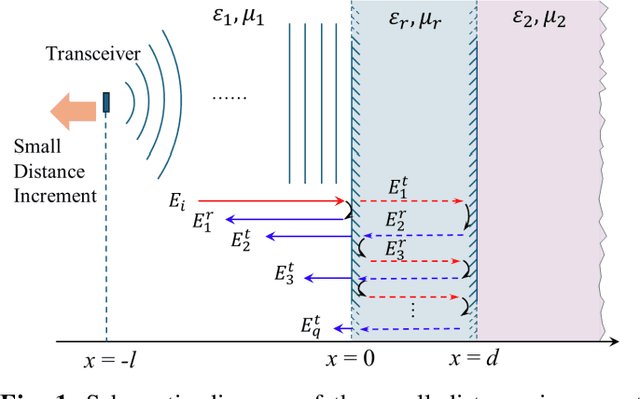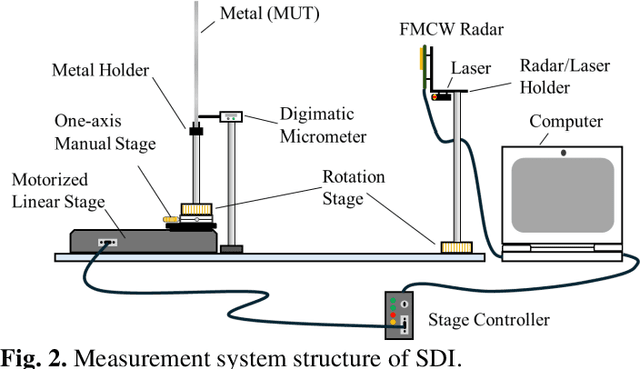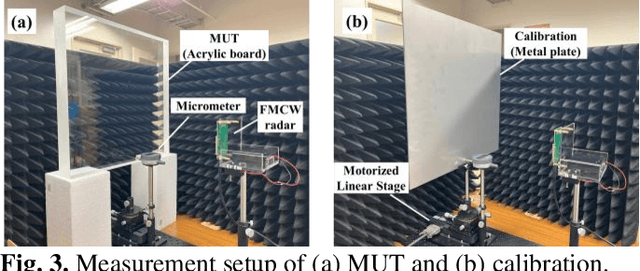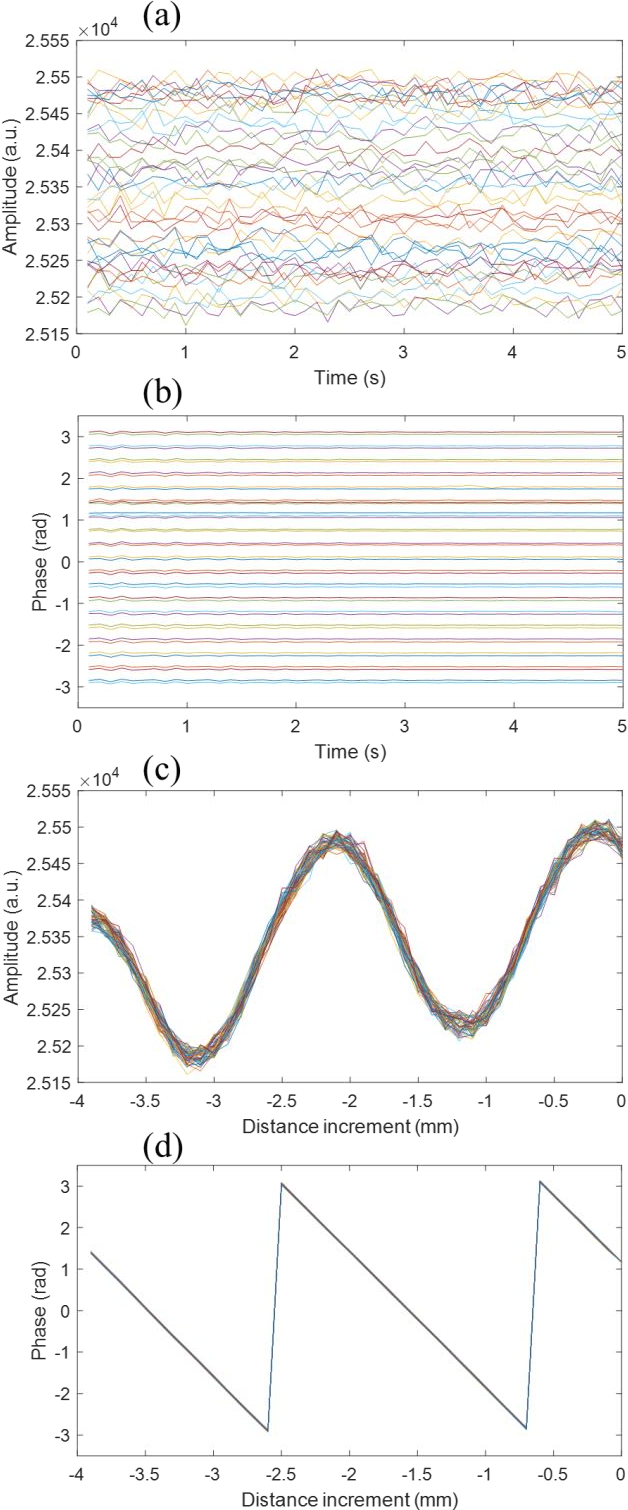Bo Wei
FedSCA: Federated Tuning with Similarity-guided Collaborative Aggregation for Heterogeneous Medical Image Segmentation
Mar 19, 2025Abstract:Transformer-based foundation models (FMs) have recently demonstrated remarkable performance in medical image segmentation. However, scaling these models is challenging due to the limited size of medical image datasets within isolated hospitals, where data centralization is restricted due to privacy concerns. These constraints, combined with the data-intensive nature of FMs, hinder their broader application. Integrating federated learning (FL) with foundation models (FLFM) fine-tuning offers a potential solution to these challenges by enabling collaborative model training without data sharing, thus allowing FMs to take advantage of a diverse pool of sensitive medical image data across hospitals/clients. However, non-independent and identically distributed (non-IID) data among clients, paired with computational and communication constraints in federated environments, presents an additional challenge that limits further performance improvements and remains inadequately addressed in existing studies. In this work, we propose a novel FLFM fine-tuning framework, \underline{\textbf{Fed}}erated tuning with \underline{\textbf{S}}imilarity-guided \underline{\textbf{C}}ollaborative \underline{\textbf{A}}ggregation (FedSCA), encompassing all phases of the FL process. This includes (1) specially designed parameter-efficient fine-tuning (PEFT) for local client training to enhance computational efficiency; (2) partial low-level adapter transmission for communication efficiency; and (3) similarity-guided collaborative aggregation (SGCA) on the server side to address non-IID issues. Extensive experiments on three FL benchmarks for medical image segmentation demonstrate the effectiveness of our proposed FedSCA, establishing new SOTA performance.
Exemplar-condensed Federated Class-incremental Learning
Dec 25, 2024



Abstract:We propose Exemplar-Condensed federated class-incremental learning (ECoral) to distil the training characteristics of real images from streaming data into informative rehearsal exemplars. The proposed method eliminates the limitations of exemplar selection in replay-based approaches for mitigating catastrophic forgetting in federated continual learning (FCL). The limitations particularly related to the heterogeneity of information density of each summarized data. Our approach maintains the consistency of training gradients and the relationship to past tasks for the summarized exemplars to represent the streaming data compared to the original images effectively. Additionally, our approach reduces the information-level heterogeneity of the summarized data by inter-client sharing of the disentanglement generative model. Extensive experiments show that our ECoral outperforms several state-of-the-art methods and can be seamlessly integrated with many existing approaches to enhance performance.
Do We Need iPhone Moment or Xiaomi Moment for Robots? Design of Affordable Home Robots for Health Monitoring
Sep 25, 2024
Abstract:In this paper, we study cost-effective home robot solutions which are designed for home health monitoring. The recent advancements in Artificial Intelligence (AI) have significantly advanced the capabilities of the robots, enabling them to better and efficiently understand and interact with their surroundings. The most common robots currently used in homes are toy robots and cleaning robots. While these are relatively affordable, their functionalities are very limited. On the other hand, humanoid and quadruped robots offer more sophisticated features and capabilities, albeit at a much higher cost. Another category is educational robots, which provide educators with the flexibility to attach various sensors and integrate different design methods with the integrated operating systems. However, the challenge still exists in bridging the gap between affordability and functionality. Our research aims to address this by exploring the potential of developing advanced yet affordable and accessible robots for home robots, aiming for health monitoring, by using edge computing techniques and taking advantage of existing computing resources for home robots, such as mobile phones.
Fusion Flow-enhanced Graph Pooling Residual Networks for Unmanned Aerial Vehicles Surveillance in Day and Night Dual Visions
Jul 17, 2024Abstract:Recognizing unauthorized Unmanned Aerial Vehicles (UAVs) within designated no-fly zones throughout the day and night is of paramount importance, where the unauthorized UAVs pose a substantial threat to both civil and military aviation safety. However, recognizing UAVs day and night with dual-vision cameras is nontrivial, since red-green-blue (RGB) images suffer from a low detection rate under an insufficient light condition, such as on cloudy or stormy days, while black-and-white infrared (IR) images struggle to capture UAVs that overlap with the background at night. In this paper, we propose a new optical flow-assisted graph-pooling residual network (OF-GPRN), which significantly enhances the UAV detection rate in day and night dual visions. The proposed OF-GPRN develops a new optical fusion to remove superfluous backgrounds, which improves RGB/IR imaging clarity. Furthermore, OF-GPRN extends optical fusion by incorporating a graph residual split attention network and a feature pyramid, which refines the perception of UAVs, leading to a higher success rate in UAV detection. A comprehensive performance evaluation is conducted using a benchmark UAV catch dataset. The results indicate that the proposed OF-GPRN elevates the UAV mean average precision (mAP) detection rate to 87.8%, marking a 17.9% advancement compared to the residual graph neural network (ResGCN)-based approach.
ExactDreamer: High-Fidelity Text-to-3D Content Creation via Exact Score Matching
May 24, 2024



Abstract:Text-to-3D content creation is a rapidly evolving research area. Given the scarcity of 3D data, current approaches often adapt pre-trained 2D diffusion models for 3D synthesis. Among these approaches, Score Distillation Sampling (SDS) has been widely adopted. However, the issue of over-smoothing poses a significant limitation on the high-fidelity generation of 3D models. To address this challenge, LucidDreamer replaces the Denoising Diffusion Probabilistic Model (DDPM) in SDS with the Denoising Diffusion Implicit Model (DDIM) to construct Interval Score Matching (ISM). However, ISM inevitably inherits inconsistencies from DDIM, causing reconstruction errors during the DDIM inversion process. This results in poor performance in the detailed generation of 3D objects and loss of content. To alleviate these problems, we propose a novel method named Exact Score Matching (ESM). Specifically, ESM leverages auxiliary variables to mathematically guarantee exact recovery in the DDIM reverse process. Furthermore, to effectively capture the dynamic changes of the original and auxiliary variables, the LoRA of a pre-trained diffusion model implements these exact paths. Extensive experiments demonstrate the effectiveness of ESM in text-to-3D generation, particularly highlighting its superiority in detailed generation.
From Sora What We Can See: A Survey of Text-to-Video Generation
May 17, 2024Abstract:With impressive achievements made, artificial intelligence is on the path forward to artificial general intelligence. Sora, developed by OpenAI, which is capable of minute-level world-simulative abilities can be considered as a milestone on this developmental path. However, despite its notable successes, Sora still encounters various obstacles that need to be resolved. In this survey, we embark from the perspective of disassembling Sora in text-to-video generation, and conducting a comprehensive review of literature, trying to answer the question, \textit{From Sora What We Can See}. Specifically, after basic preliminaries regarding the general algorithms are introduced, the literature is categorized from three mutually perpendicular dimensions: evolutionary generators, excellent pursuit, and realistic panorama. Subsequently, the widely used datasets and metrics are organized in detail. Last but more importantly, we identify several challenges and open problems in this domain and propose potential future directions for research and development.
Small Distance Increment Method for Measuring Complex Permittivity With mmWave Radar
Mar 19, 2024



Abstract:Measuring the complex permittivity of material is essential in many scenarios such as quality check and component analysis. Generally, measurement methods for characterizing the material are based on the usage of vector network analyzer, which is large and not easy for on-site measurement, especially in high frequency range such as millimeter wave (mmWave). In addition, some measurement methods require the destruction of samples, which is not suitable for non-destructive inspection. In this work, a small distance increment (SDI) method is proposed to non-destructively measure the complex permittivity of material. In SDI, the transmitter and receiver are formed as the monostatic radar, which is facing towards the material under test (MUT). During the measurement, the distance between radar and MUT changes with small increments and the signals are recorded at each position. A mathematical model is formulated to depict the relationship among the complex permittivity, distance increment, and measured signals. By fitting the model, the complex permittivity of MUT is estimated. To implement and evaluate the proposed SDI method, a commercial off-the-shelf mmWave radar is utilized and the measurement system is developed. Then, the evaluation was carried out on the acrylic plate. With the proposed method, the estimated complex permittivity of acrylic plate shows good agreement with the literature values, demonstrating the efficacy of SDI method for characterizing the complex permittivity of material.
Evaluation of ChatGPT-Generated Medical Responses: A Systematic Review and Meta-Analysis
Oct 12, 2023Abstract:Large language models such as ChatGPT are increasingly explored in medical domains. However, the absence of standard guidelines for performance evaluation has led to methodological inconsistencies. This study aims to summarize the available evidence on evaluating ChatGPT's performance in medicine and provide direction for future research. We searched ten medical literature databases on June 15, 2023, using the keyword "ChatGPT". A total of 3520 articles were identified, of which 60 were reviewed and summarized in this paper and 17 were included in the meta-analysis. The analysis showed that ChatGPT displayed an overall integrated accuracy of 56% (95% CI: 51%-60%, I2 = 87%) in addressing medical queries. However, the studies varied in question resource, question-asking process, and evaluation metrics. Moreover, many studies failed to report methodological details, including the version of ChatGPT and whether each question was used independently or repeatedly. Our findings revealed that although ChatGPT demonstrated considerable potential for application in healthcare, the heterogeneity of the studies and insufficient reporting may affect the reliability of these results. Further well-designed studies with comprehensive and transparent reporting are needed to evaluate ChatGPT's performance in medicine.
Overview of Human Activity Recognition Using Sensor Data
Sep 12, 2023Abstract:Human activity recognition (HAR) is an essential research field that has been used in different applications including home and workplace automation, security and surveillance as well as healthcare. Starting from conventional machine learning methods to the recently developing deep learning techniques and the Internet of things, significant contributions have been shown in the HAR area in the last decade. Even though several review and survey studies have been published, there is a lack of sensor-based HAR overview studies focusing on summarising the usage of wearable sensors and smart home sensors data as well as applications of HAR and deep learning techniques. Hence, we overview sensor-based HAR, discuss several important applications that rely on HAR, and highlight the most common machine learning methods that have been used for HAR. Finally, several challenges of HAR are explored that should be addressed to further improve the robustness of HAR.
Pensieve 5G: Implementation of RL-based ABR Algorithm for UHD 4K/8K Content Delivery on Commercial 5G SA/NR-DC Network
Dec 29, 2022Abstract:While the rollout of the fifth-generation mobile network (5G) is underway across the globe with the intention to deliver 4K/8K UHD videos, Augmented Reality (AR), and Virtual Reality (VR) content to the mass amounts of users, the coverage and throughput are still one of the most significant issues, especially in the rural areas, where only 5G in the low-frequency band are being deployed. This called for a high-performance adaptive bitrate (ABR) algorithm that can maximize the user quality of experience given 5G network characteristics and data rate of UHD contents. Recently, many of the newly proposed ABR techniques were machine-learning based. Among that, Pensieve is one of the state-of-the-art techniques, which utilized reinforcement-learning to generate an ABR algorithm based on observation of past decision performance. By incorporating the context of the 5G network and UHD content, Pensieve has been optimized into Pensieve 5G. New QoE metrics that more accurately represent the QoE of UHD video streaming on the different types of devices were proposed and used to evaluate Pensieve 5G against other ABR techniques including the original Pensieve. The results from the simulation based on the real 5G Standalone (SA) network throughput shows that Pensieve 5G outperforms both conventional algorithms and Pensieve with the average QoE improvement of 8.8% and 14.2%, respectively. Additionally, Pensieve 5G also performed well on the commercial 5G NR-NR Dual Connectivity (NR-DC) Network, despite the training being done solely using the data from the 5G Standalone (SA) network.
 Add to Chrome
Add to Chrome Add to Firefox
Add to Firefox Add to Edge
Add to Edge